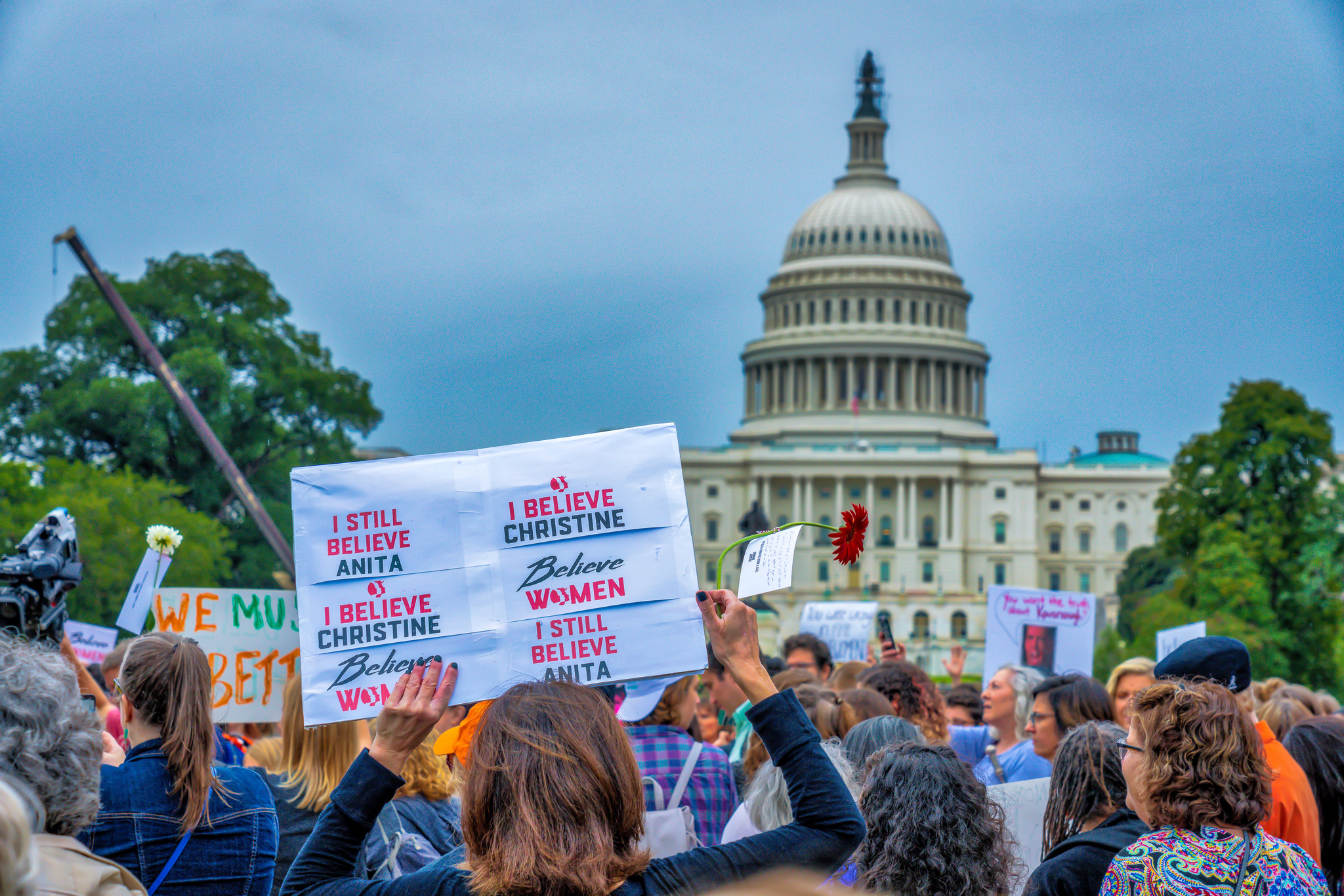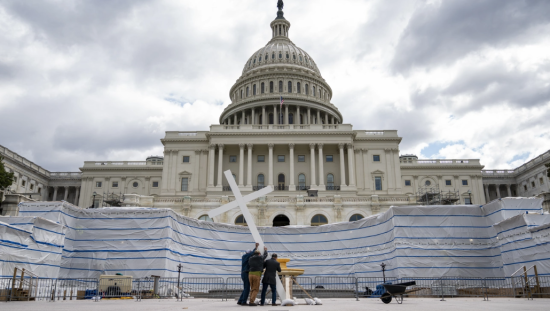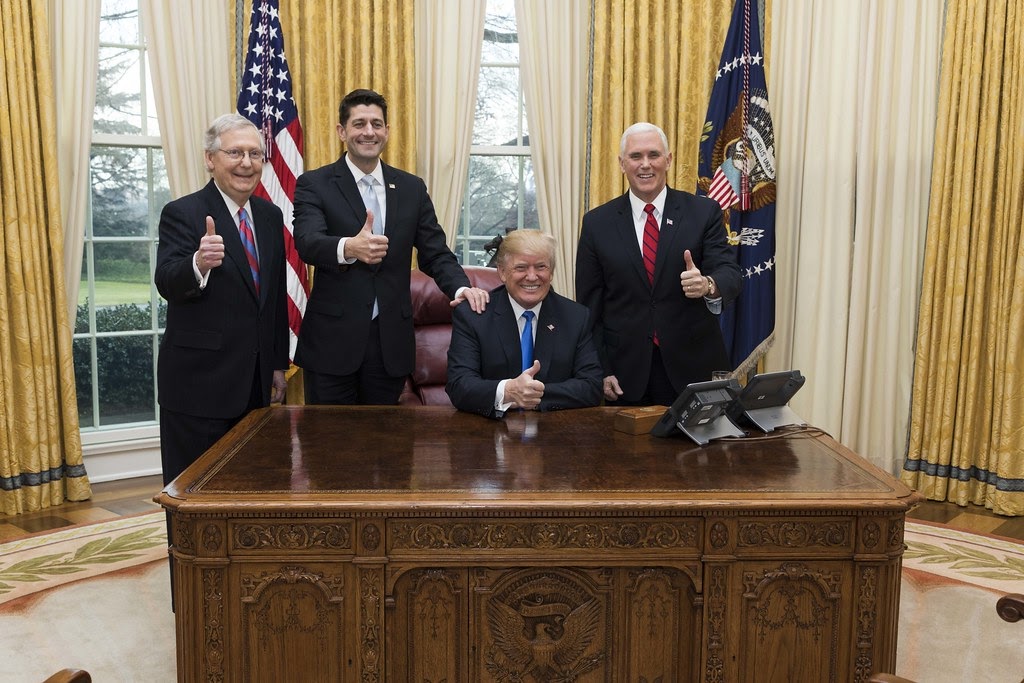In the midst of the #MeToo movement, sexual harassment and sexual violence in the United States have come to the forefront of social discourse. Over the past year and a half, hundreds of allegations of sexual misconduct have been brought forward against powerful celebrities, politicians, and CEOs.[1] It seemed as though the American public was, for the first time, accepting the terms of basic human decency—that sexual violence under any circumstance is unacceptable and inexcusable. However, this was nothing more than a mirage, a fact made glaringly apparent by the recent confirmation of Brett Kavanaugh to the Supreme Court.
The controversy surrounding the allegations of sexual assault levied against Justice Kavanaugh spoke volumes about how our nation currently views issues of sexual violence. Sadly, an appropriate response to sexual violence has yet to transcend politics. Much more than a redeemable ethical impropriety, sexual violence has lasting consequences and substantial costs that for too long have been left unspoken, contributing to a drought of targeted, evidence-based solutions. Although recent events seem to suggest otherwise, sexual violence is not a political card to be dealt. Until a solution is created, sexual violence will continue to ravage the minds and bodies of millions of Americans. It is time we start treating sexual violence as the public health crisis it is.
The epidemiological data of sexual violence in the United States are staggering. Almost half (44.6%) of women and over one-fifth (22.2%) of men have experienced sexual violence victimization (other than rape) at some point in their lives.[2] It is estimated that approximately 50% of sexual assault victims suffer from Post-Traumatic Stress Disorder (PTSD) in their lifetime, a far cry from the rate of PTSD in the general U.S. population (8%).[3][4]
Perhaps even more disturbing is the significant impact of sexual violence on health behaviors and outcomes not directly related to the assault. Male and female victims of sexual violence have been shown to have higher rates of excessive alcohol use, pre-obesity and obesity, smoking, and HIV risk factors (IV drug use, treatment for STDs, prostitution, unprotected anal sex).[5] Frequent headaches, difficulty sleeping, and activity limitations are also reported more frequently by victims of sexual violence.[2] Quite simply, victims’ health and quality of life are on average far lower than those who have not been assaulted.
The treatment of these chronic physical and psychological ailments is not without substantial financial costs. In 2014, the lifetime cost of rape was estimated to be over $120,000 per victim, a total cost of almost $3.1 trillion nationwide. The government absorbs approximately one-third ($1 trillion) of this cost, with insurance companies and employers assuming much of the rest.[6] If a new infectious disease or genetic syndrome cost the government $1 trillion, would we not be working aggressively to find solutions? Similar statistics would surely spur Republicans and Democrats alike into immediate action. The current rhetoric surrounding issues of sexual violence is evidently failing to instigate the change we desperately need. History suggests that the power to shift the discussion from worthless excuses to necessary action may lie in the appropriate identification of sexual violence as a public health dilemma.
This is the not first time we have felt the tragic repercussions of treating a public health issue as a matter of solely ethical or political import. The AIDS crisis of the 1980s and the opioid epidemic of late serve as testaments to the surge in public attention, funding, and policy development that can accompany a shift in rhetoric. In both cases, a dissipation of stigma and an acknowledgement of the issues’ grave health implications allowed for more robust scientific, political, and social responses.
In the year following the first cases of AIDS, the disease was publicized as a “homosexual disorder,” and some even began to consider AIDS a primarily moral issue, a deadly consequence of homosexuality.[7] These regressive and ill-founded views resulted in practically nothing being done to combat the crisis. Federal government funding for HIV/AIDS research, prevention, and treatment programs that first year (FY 1981) totaled a measly $200,000, or roughly $550,000 in today’s dollars.[8] In 1982, after a sudden shift from a focus on morality to an emphasis on human health, the Centers for Disease Control and Prevention (CDC), Food and Drug Administration (FDA), and National Institutes of Health (NIH) began soliciting support and program development from other government agencies “on the basis of the epidemiological data.”[9] Today, with a federal HIV/AIDS budget of $32 billion (FY 2017), we have reduced the number of new HIV infections by 75%, from 150,000 per year at the epidemic’s peak in the mid-1980’s to 38,500 in 2015.[10][11] While a whole host of other issues, namely homophobia, were undoubtedly at play within the HIV/AIDS issue, solutions arose from the need to solve a crisis of human health—a crisis made unignorable by activists and researchers intent on changing the lens through which the public viewed the issue. A public and a government looking at the issue through the clarifying lens of public health were able to problem-solve in ways unimaginable by those staring through the clouded lens of stigma and partisan politics.
The nation’s response to substance use issues and the opioid epidemic has followed a similar trajectory. The U.S. has been pretending to address the issue of illicit drug use since the Nixon era, when it initiated the since failed War on Drugs.[12] This predominantly legal response, fueled heavily by racial prejudice, was grounded in the view of drug use as “a moral failing” of the individual.[13] It wasn’t until the epidemic reached a dire new milestone and began to impact a whiter and more affluent population that the public health implications were seriously considered.[14] In 2009, drug overdose became the leading cause of injury-related death in the U.S.[15] After decades devoid of any bona fide attempt to combat the health effects of drug use, the national opioid crisis was formally declared a public health emergency by the U.S. Department of Health and Human Services (HHS) in October 2017.[16] While rates are still alarmingly high, overdose deaths have for the first time in decades begun to fall over the past six months, due at least in part to the attention and funding brought by the epidemic’s elevated status as a public health crisis.[17] We are still leagues away from eliminating the stigma and feigned moral concern surrounding substance use, but a public health spotlight aimed at the issue in recent years has brought about a healthy improvement in public opinion.
With the issue of sexual violence, we are certainly still stuck in the phase of inaction. The amount of funding and attention devoted to sexual violence research and prevention is grossly inconsistent with its rightful status as a public health issue. Health problems traditionally considered as public health issues, such as cardiovascular disease and cancer, receive disproportionately more funding than sexual violence despite having a smaller economic impact. Rape and attempted rape have 1.7 times the annual economic impact of cardiovascular disease, yet receive one-hundredth the amount of NIH research funding ($18 million vs. $1.96 billion).[18] The ratio of annual public spending to economic burden for the rape and attempted rape of women is a dismal 0.09%, a figure that would be even lower if it accounted for other forms of sexual violence.[19]
Public health programs have been used effectively in other countries, some much less economically developed than the U.S. Nongovernmental organizations in Zimbabwe have used public meetings and debates, television, and even theater to prevent sexual violence through awareness campaigns in which survivors share their stories.[20] In Zimbabwe—a nation with a GDP 0.09% that of the US—14% of women aged 15-49 report having experienced sexual violence at some point in their lives, compared to roughly half of women in the United States.[21][22] In the Philippines, where the Task Force on Social Science and Reproductive Health has developed training modules for nurses and medical students on sexual violence, only 6% of women report having experienced sexual violence.[23] Primary prevention for sexual violence has been consistently proven to work but, even in the face of mounting evidence, the U.S. has not prioritized public health research and program development for sexual violence.
All analogies have their limitations, and there is little doubt that the nature of sexual violence differs from other public health issues, including the AIDS crisis and opioid epidemic. With sexual violence, we are not discussing the outbreak of something new as with AIDS, nor are we discussing issues of legality as with drug use (although criminal enforcement of sexual violence in the U.S. is depressingly unreliable). We are discussing a scourge possessing an entirely unique set of drivers and dynamics. We would be doing the issue a massive disservice to disregard the role that socially reinforced gender inequities and power imbalances play in propagating sexual violence. However, these drivers and public health considerations are not necessarily mutually exclusive. A public health approach and resulting interventions could begin to attack these toxic phenomena, many of which are structurally rooted in our society.
In an ideal world, it shouldn’t matter which angle is used to discuss a crisis as horrendous and widespread as sexual violence in the U.S. None of this is to say that sexual violence is not a moral issue—it is. But it is also a profound health issue, and approaching it as such may be the impetus needed to unite politicians, researchers, community activists, and the public toward a common goal. The rhetorical life cycles of similar issues and the success of public health interventions abroad confirm that sexual violence deserves the same attention, funding, and research afforded to all other major public health issues.
Many victims of sexual violence suffer their whole lives from a harsh reality of debilitating health problems and unaffordable health care costs. It is this reality that we must begin to seriously acknowledge and address. When people’s lives and wellbeing are at stake, the only acceptable political debate is about how to most effectively and expediently solve the problem. The time to start that debate is not tomorrow or 2020—it is now.
[1] “Sexual Harassment and Assault Allegations List.” Vox. Updated October 08, 2018. https://www.vox.com/a/sexual-harassment-assault-allegations-list.
[2] . Black, Michele, et al. “National Intimate Partner and Sexual Violence Survey: 2010 Summary Report.” National Center for Injury Prevention and Control (Centers for Disease Control and Prevention). November 2011. https://www.cdc.gov/ViolencePrevention/pdf/NISVS_Report2010-a.pdf.
[3] Creamer, Mark, et al. “Post-traumatic stress disorder: findings from the Australian National Survey of Mental Health and Well-being.” Psychological Medicine (31), 1237-47. 2010. https://www-cambridge-org.ezproxy.neu.edu/core/services/aop-cambridge-core/content/view/E3BC3B438AA652411395CC4F2CE59653/S0033291701004287a.pdf/posttraumatic_stress_disorder_findings_from_the_australian_national_survey_of_mental_health_and_wellbeing.pdf.
[4] Chivers-Wilson, Kaitlin. “Sexual assault and post-traumatic stress disorder: A review of the biological, psychological and sociological factors and treatment.” McGill Journal of Medicine 9(2), 111-18. 2006. https://www.ncbi.nlm.nih.gov/pmc/articles/PMC2323517/#b9-mjm0902p111.
[5] Smith, Sharon G. and Matthew J. Breiding. “Chronic disease and health behaviors linked to experiences of non-consensual sex among men and women.” Public Health 125(9), 653-59. 2011. https://www-sciencedirect-com.ezproxy.neu.edu/science/article/pii/S0033350611001909
[6] Peterson, C., et al. “Lifetime Economic Burden of Rape Among U.S. Adults.” American Journal of Preventive Medicine 52(6), 691-701. 2017. https://www.ncbi.nlm.nih.gov/pubmed/28153649.
[7] “The AIDS Epidemic: 1981-1987.” The New York Times. Accessed October 27, 2018. http://movies2.nytimes.com/library/national/science/aids/timeline80-87.html.
[8] Johnson, Judith and Sharon Coleman. “AIDS Funding for Federal Government Programs: FY1981-FY2005.” Congressional Research Service. Updated April 21, 2004. https://www.hsdl.org/?view&did=729613.
[9] Curran, James and Harold Jaffe. “AIDS: the Early Years and CDC’s Response.” Centers for Disease Control and Prevention. October 07, 2011. https://www.cdc.gov/mmwr/preview/mmwrhtml/su6004a11.htm.
[10] “HIV and AIDS — United States, 1981-2000.” Centers for Disease Control and Prevention. June 01, 2001. https://www.cdc.gov/mmwr/preview/mmwrhtml/mm5021a2.htm.
[11] “HIV in the United States: At A Glance.” Centers for Disease Control and Prevention. Accessed October 27, 2018. https://www.cdc.gov/hiv/statistics/overview/ataglance.html.
[12] “A Brief History of the Drug War.” Drug Policy Alliance. Accessed October 28, 2018. http://www.drugpolicy.org/issues/brief-history-drug-war.
[13] Dasgupta, Nabarun, et al. “Opioid Crisis: No Easy Fix to Its Social and Economic Determinants.” American Journal of Public Health 108(2), 182-86. 2018. https://ajph.aphapublications.org/doi/pdf/10.2105/AJPH.2017.304187
[14] Tache, Joe. “The Overlooked Racial Complexities of the Opioid Epidemic.” Northeastern University Political Review. June 21, 2016. https://nupoliticalreview.org/2016/06/21/the-overlooked-racial-complexities-of-the-opioid-epidemic/.
[15] Wolff, M. “Fact Sheet: The Opioid Overdose Epidemic in the United States.” Cornell University Weill Medical College. Updated April 05, 2018. http://psych-history.weill.cornell.edu/his_res/ofs.html.
[16] HHS Press Office. “HHS Acting Secretary Declares Public Health Emergency to Address National Opioid Crisis.” HHS.gov. October 26, 2017. https://www.hhs.gov/about/news/2017/10/26/hhs-acting-secretary-declares-public-health-emergency-address-national-opioid-crisis.html.
[17] Joseph, Andrew. “Overdose deaths have fallen for six months. Is it temporary or a sign of a corner turned?” STAT. October 23, 2018. https://www.statnews.com/2018/10/23/overdose-deaths-fall-for-six-months/?utm_source=News%40Northeastern&utm_campaign=bfd7f3e007-EMAIL_CAMPAIGN_2018_10_24_01_05&utm_medium=email&utm_term=0_508ab516a3-bfd7f3e007-278518549
[18] Waechter, Randall and Van Ma. “Sexual Violence in America: Public Funding and Social Priority.” American Journal of Public Health 105(12), 2430-37. 2015. https://www.ncbi.nlm.nih.gov/pmc/articles/PMC4638240/
[19] Ibid.
[20] “World report on violence and health.” World Health Organization. 2002. http://www.who.int/violence_injury_prevention/violence/global_campaign/en/chap6.pdf?ua=1.
[21] “Zimbabwe: Country Profile.” World Bank. 2017. http://databank.worldbank.org/data/views/reports/reportwidget.aspx?Report_Name=CountryProfile&Id=b450fd57&tbar=y&dd=y&inf=n&zm=n&country=ZWE.
[22] Zimbabwe National Statistics Agency & ICF International. “Zimbabwe: Demographic and Health Survey 2015.” 2015. http://evaw-global-database.unwomen.org/-/media/files/un%20women/vaw/vaw%20survey/1%20zimbabwe%20dhs%202015.pdf?vs=5146.
[23] Philippines Statistics Authority & ICF International. “Philippines: Demographic and Health Survey 2013.” 2013. http://evaw-global-database.unwomen.org/-/media/files/un%20women/vaw/vaw%20survey/philippines%20vaw%20survey.pdf?vs=2146.



